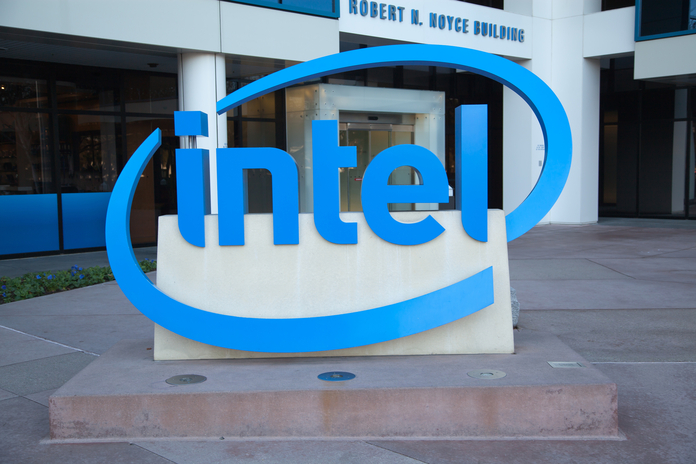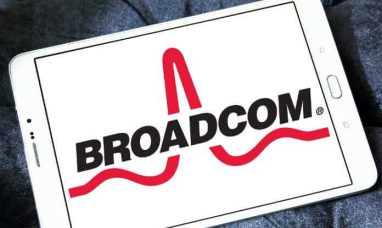One of the most well-known companies in the semiconductor sector is Intel Corporation (NASDAQ:INTC). Yet, its stock has been worthless for many years. Recently, Advanced Micro Devices (AMD) has gained considerable market share from the company in the CPU market. More significantly, Intel lagged behind its rivals in terms of technology. Shamefully, the corporation had to inform the world in 2020 that its upcoming significant manufacturing milestone had to be postponed by several years.
Since the company’s stock only increased by 17% over the previous five years, Intel’s stockholders have paid the price for the company’s recent issues. In contrast, over the same period, AMD has grown by 550%, Nvidia (NVDA) by 325 percent, iShares Semiconductor ETF (SOXX) by 160%, and the Nasdaq 100 ETF (QQQ) by 110%.
But despite its recent blunders, Intel continues to rule the CPU and GPU sectors. Additionally, Intel has made significant adjustments and increased R&D spending, resulting in technological advancements and improved products. As a result, Intel will probably reclaim some of AMD’s lost market share, which will improve growth and profitability. Additionally, Intel’s CEO stated that the business will hit a critical manufacturing milestone earlier than expected (late 2024), suggesting that Intel is on track to reclaim its preeminent position in the chip industry.
Since 2020, Intel’s earnings projections have dropped significantly, and the company’s earnings are probably already at a low point. Future earnings may exceed analysts’ incredibly low projections, and higher earnings revisions should be seen as we move forward. Currently, Intel is trading at about 16 times the expected future earnings per share. This value is reasonable, and the company should see
a significant growth in earnings, allowing its stock price to rise dramatically as the business develops over the next few years.
Intel Across Five Years
Although Intel has experienced ups and downs, the stock has generally remained flat for the past five years. We can now assess how severe the disconnect and underperformance have been by contrasting Intel to several other well-known chip manufacturers.
The Competition and Intel
The results don’t much change whether you’re thinking about a larger time period, like the past ten years. While Nvidia and AMD have increased by thousands, Intel has only increased by about 60%. The QQQ ETF and the SOXX index have both increased by several hundred percent. As a result, we can observe that Intel has significantly underperformed for at least ten years.
Why then would you want to invest in a stock that has recently underperformed its peers and fared so poorly?
Okay, so things are altering. Intel is undergoing a significant turnaround and is likely to regain market share. Additionally, Intel’s stock is absurdly undervalued. The stock should rise sharply when the business starts to increase earnings in the upcoming years.
AMD CPU Market: Intel Is Likely to Regain Market Share
Early in 2016, Intel’s CPU market share reached a zenith of about 80%. After that, Intel’s market share began to decline, reaching just 60% in 2019–2020. However, there has been a recovery in recent quarters. With Intel’s new portfolio, we should continue to see growth in the company’s CPU market share. We have noticed a recent upward trend in Intel’s market share, which has increased to about 64–66 % in recent quarters. We may expect a further increase to about 70% by this time next year.
With the recent failures, Intel’s desktop CPU market share plunged from about 80% to just 50%. In other words, AMD has managed to eat lunch with Intel. However, Intel had started to gain ground in the desktop CPU space, and by early 2022, it had a market share of roughly 60%. Intel should continue to increase market share and sales as it enhances its technology and product portfolio.
Intel’s CPUs perform best in the laptop industry, where the company has had a long market share of between 80 and 90%. However, Intel’s market share recently dropped into the 70s, but it has also started to increase again. Alder Lake, the company’s 12th-generation Core CPUs, may help Intel regain a 90% market dominance.
Let’s now examine the market for graphics processing units.
While Intel is the industry leader for integrated GPUs, Nvidia and AMD are the market leaders for discrete graphics cards. Intel remains the dominant player in the GPU market, despite its market share falling from more than 70% to just 60% in recent years. Around 76 percent of GPU sales are integrated GPUs, with only about 14% of those sales going to AMD’s Radeon. Intel is moving into the discrete GPU market, even though it should continue to rule the integrated GPU market. As time goes on, Intel’s Arc Alchemist could successfully compete with AMD and Nvidia in the lucrative dedicated GPU market, resulting in increased market share, sales, and earnings for Intel.
Investments by Intel Should Improve Income Statement
Intel’s most recent income statement reveals a YoY revenue decline of 6.7%. However, Intel’s R&D was up 20% YoY, even with the sharp fall in revenue. Additionally, the previous quarter saw a 32% YoY growth in Intel’s marketing, general, and administrative spending. In the most recent quarter, Intel spent a record-breaking $4.36 billion on research and development and nearly $16 billion overall. Thus, it is clear that Intel does not now place a high focus on increasing earnings. Contrarily, Intel is heavily investing in reclaiming its technological superiority. In contrast, AMD spent around $1 billion on R&D in the most recent quarter and about $3.3 billion overall.
Now consider that AMD generated $5.9 billion in revenue in the first quarter while spending $1 billion, or nearly 17%, on R&D. For the same quarter, Intel’s R&D spending was roughly 24% of revenues ($18.35 billion). As a result, we see Intel spending more than four times as much on research and development as AMD. The business has strong product portfolios that should help it regain market share as time progresses.
Too Low a Price for Intel to Ignore
AMD and Intel each have market caps of around $147 billion and $165 billion, respectively. With $79 billion in revenue in 2021, Intel’s P/S ratio was around twice sales. With $16.4 billion in revenue in 2021, AMD’s P/S ratio was nine times sales. Now that I know AMD is a growth company with strong earnings momentum, I, too, own AMD stock. However, we shouldn’t ignore how inexpensive Intel has become because the company currently offers an incredible purchasing opportunity.
The consensus expectation for AMD’s EPS is $4.38, which would put its P/E ratio at roughly 20.5. This year, Intel’s expected EPS of $3.90 is at a P/E ratio of around 10. As a result, we can see that Intel is currently incredibly cheap. Still, we also need to remember that earnings and earnings expectations are likely at a low point at this time.
Consequently, if we look ahead:
The worst years for Intel should be 2022 and 2023, and in 2024 sales growth should resume at double-digit rates. In 2024, Intel should bring in around $86 billion in sales, while higher-end projections indicate that the corporation may bring in closer to $90 billion.
In 2020, more than $6 in EPS was predicted by consensus experts for 2022. The current projections, though, are for less than $4. In some cases, EPS predictions have declined by 40–50%. However, EPS forecasts should increase more, just as in recent years. Estimates for 2024 EPS are rising. If the business implements its recovery strategy in the upcoming years, this encouraging pattern of rising EPS revisions should continue.
In the following years, Intel should resume experiencing low double-digit revenue growth as it regains its technological edge. Additionally, as the stock experiences multiple expansions, the company’s forward P/E ratio should increase. The profits curve of the company is currently at a low point, and EPS in subsequent years may be significantly higher. As a result, the company’s stock price could climb significantly as its earnings rise and the forward P/E multiple widens. By 2025–2028, Intel might hit $100–150, making the stock an excellent investment.
Dangers to Intel
Even though I am optimistic about Intel’s turnaround, there are still dangers to be aware of. It’s possible that Intel won’t make the technological advancements anticipated for the foreseeable future. Competition can continue to advance faster than Intel, resulting in further market share losses and decreased income. As the corporation develops, Intel could not be as profitable as anticipated. Additionally, Intel may continue to face the same challenges it has in the past. The probability that the stock price may decline further before a long-term recovery occurs during the impending recession is also possible. Before investing in Intel, market participants should carefully examine these and other risks.
Featured Image: Megapixl © Dragan56















